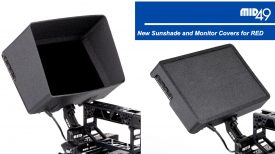By site editor Dan Chung:
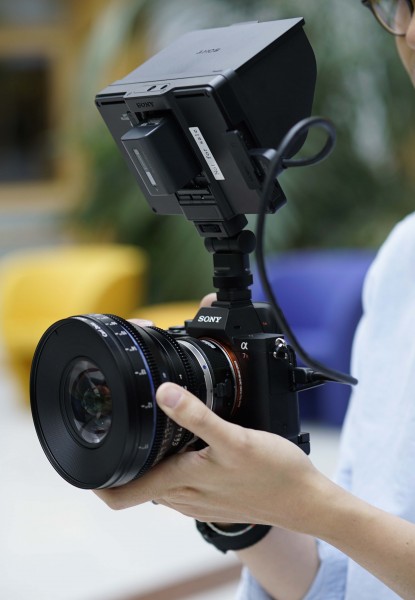
This week I was invited by Sony to see the highly anticipated a7R II compact system camera. Much has been made of its 4K video capabilities and I wanted to test for myself just what the 42 megapixel mean machine is capable of as a video camera. My impressions are based solely on the pre-production a7R II – things may still change on the production model and firmware alterations are still possible.
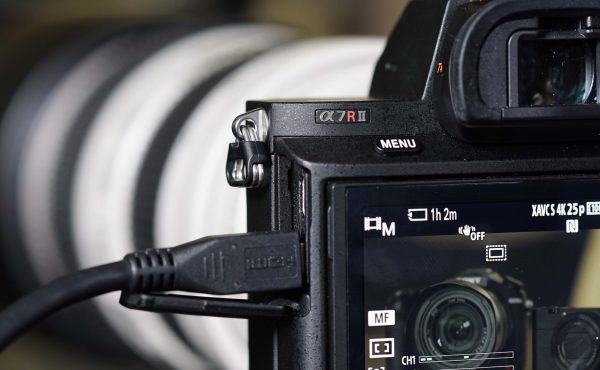
Because the camera isn’t a production version I wasn’t able to take away any of the imagery I shot. I was however able to bring my own 4K monitor and a plethora of lenses to the Sony offices in order to evaluate the image. I’ve based my assessment mainly on what I was able to see on the monitor.
The camera shoots 4K (QFHD 3840×2160) video in two different crop factors. The S35 4K crop mode is claimed by Sony to provide the best quality video image. This is because it does not use pixel binning techniques to create a 4K image from the 42 MP sensor. The full-frame mode allows for shallower depth of field with the right lens, but this image is not supposed to be as good as the S35 one.
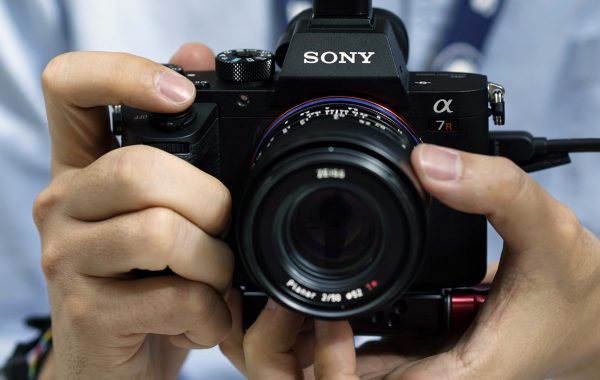
So how is the image? In short what I saw looked surprisingly good. The S35 4K image really is free of any obvious errors – fine detail was incredibly well resolved and there was virtually no evidence of aliasing and moire at base ISO. S-Log2 is available for internal and external recording, along with a range of standard and cine profiles.
The base sensitivity of the camera is 800 ISO. This is the lowest ISO you can set when the camera is set to S-Log2 (Picture Profile 7). In order to shoot S-Log2 on the a7S you need to have the camera set no lower than 3200 ISO, which makes shooting in bright conditions complicated. The a7R II will therefore require far less neutral density filtration than an a7S.
When I looked at the image on a monitor it was very clean. It had excellent detail and in S-Log2 there was certainly a lot of information in the shadows and highlights. There was some noise in the shadows but nothing excessive. Sony haven’t published the dynamic range of the sensor but I expect it to be very similar to the a7S. I would be surprised if anyone could tell this image apart from that of a FS7 or FS700 shooting 4K without careful examination. It is that good.
Of course when the camera records to SDXC cards it won’t hold onto every bit of this information. When recording 4K internally the camera has a maximum bitrate of 100 Mbps in XAVC S and uses 8-bit 4:2:0 recording. I wasn’t able to test how good this is but I suspect that even with Sony’s newest technologies it might be pushing the image a little too hard to record S-Log2 at 8-bit internally. If feeding 8-bit 4:2:2 to an external recorder like the Atomos Shogun or Convergent Design Odyssey 7Q+, then I would expect to get close to what I was able to see on my monitor. It is worth noting that the European a7R II I saw has a 29 minute recording limit in common with other a7 cameras. One great feature is that you can actually record 4K internally and output 4K via HDMI at the same time to a display or recorder. The only potential issue is that you can’t output HD while recording 4K internally, which makes adding an HD EVF or Monitor impossible without some means of downscaling the output from 4K to HD.
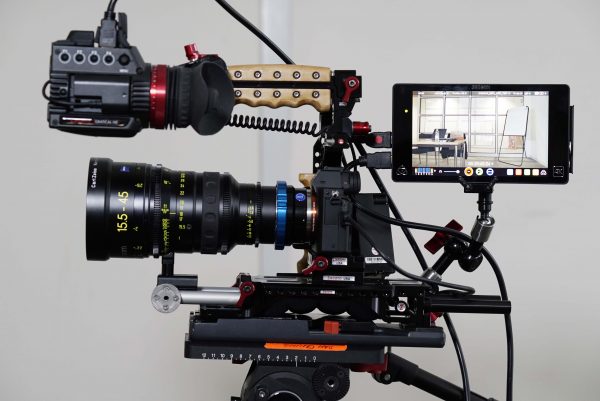
The second big surprise is that the full-frame 4K mode also looks remarkably good. I assume that pixel-binning is being used to reduce the output of the 42-megapixel sensor to achieve this. As I have pointed out before, the quality of images achieved by pixel-binning techniques varies wildly. There was very little obvious aliasing and moire of the kind we used to see on the 5D MkII. The 4K full-frame output of the a7R II is really excellent. There are some traces of aliasing visible on lines of high contrast, but you really have to look for them.
Low light performance was the third big surprise. I wasn’t expecting great things from a camera with such a high pixel count – I was wrong. The camera acquits itself very well even at 6400 ISO. Noise is present but the image was still usable. I compared it on the monitor to my a7S. The a7S full-frame 4K output was as expected better than the S35 a7R II 4K image. What surprised me is that the a7R II 4K S35 image was less noisy than the a7S APS-C 4K image (which I believe is upscaled to 4K internally from 2.7K). I can only assume that the new BSI rear sensor illumination technology of the a7R II sensor is making this possible.
The fourth big surprise came when I panned the camera from side to side looking for evidence of rolling shutter. In 4K S35 mode the camera had obvious rolling shutter which looked similar to what I am used to with the a7S. It may be slightly better but without proper measurement tools it is impossible to say.
Switch to full-frame 4K and it’s a different story. I expected skew effects to be similar if not worse than the S35 mode, but the reverse was true. In full-frame mode the skew or jello effect was much reduced and for any filming involving rapid motion I would choose this full-frame over the S35 mode.
It wasn’t possible to test colour in any meaningful way – I can only assume that it will be similar to the a7S.
The overall design and layout will be instantly familiar to anyone who has used another a7 series camera. The body is almost identical to the a7 II, but with the addition of a locking main mode dial. The electronic viewfinder (EVF) has been improved and is now even clearer and sharper than the one on the a7S. New optics in the finder give it a broader field of view and it gave me great confidence when manual focussing.
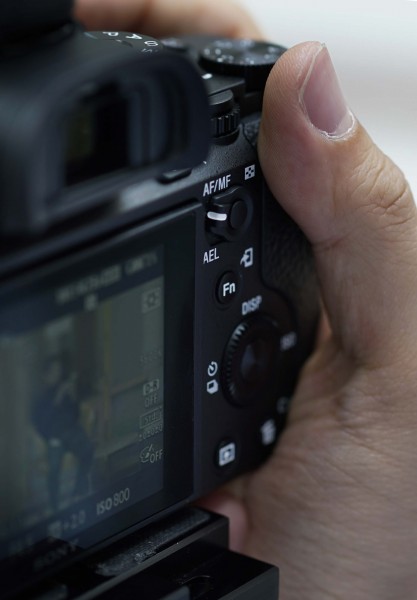
The body felt well made and there were no creaking parts. Menus were typically Sony – by which I mean there were a lot of them and navigating to find functions can take a while. But the fifth big surprise is that Sony have allowed the main video functions to be mapped to the camera’s custom buttons. Video can now be triggered from any assignable button (but sadly not the shutter button which many users have been lobbying for). This is still a big improvement though and I was able to assign recording to the large centre button on the rear of the camera. You can also assign selection or EVF or rear screen to a function button.
There is a redesigned HDMI cable protector that looks like an improvement over the one that shipped with the a7S. In the box is also a charger and two batteries – a nice touch.
So what are the downsides of this camera so far? The most obvious thing I discovered during my brief period of testing is that the a7R II eats batteries when set for 4K video. One nice feature though is that you can run the camera (but not charge the battery inside) via USB power from a regular phone battery or similar source. If you are mounting the camera on a rig I would strongly suggest using a professional external battery source connected via a dummy battery cable like this one from Hawkwoods.
One major selling point of the a7R II for stills has been the ability of the camera to use rapid phase detection auto focussing (PDAF) not just with native E-mount lenses, but also with adapted Canon EOS lenses using Metabones or similar lens adapters. It also allows Sony Alpha SLR lenses to use phase detect autofocus with the LA-EA3 adapter (instead of requiring the LA-EA4 with its built-in transflective mirror system). There have been several impressive autofocus tracking demonstration videos posted online which show Canon EOS lenses working almost as well as native E lenses for stills. I was hoping that this would be equally usable in video.
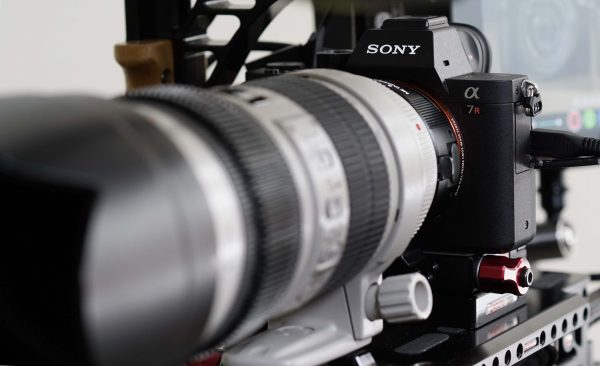
I was therefore disappointed to discover that this is not the case. I attached several Canon lenses via a Metabones Smart Adapter IV only to discover that the continuous AF simply didn’t work and the only way to make it focus was to semi-press the shutter button. The speed and accuracy of this autofocus was nothing like the performance in stills mode and had a tendency to hunt. (Note – I only tested this in manual exposure mode as this is the only mode I would use for video)
I also tried Sony Alpha lenses with the LA-EA3 adapter and again no dice. The only way to get the PDAF working continuously in video is to use Sony’s own E-mount lenses. I performed several tests and using single point, wide area and face detect modes, with varying degrees of success. You can see some of these below:
With the E glass AF is improved but still not as reliable as Canon’s C100 or C300 with Dual Pixel CMOS AF. In general the a7R II AF coped quite well with simple scenarios like an interview head shot, less so where there was more going on in the frame.
The face detect AF is supposed to use the nearest subject in focus at all times. There is no way to manually choose which face is to be followed, unlike the C300 MkII.
Interestingly you can also have the camera memorise certain faces and give them priority. I didn’t test this but it may be an interesting way to shoot an interview. You can also engage the face detection AF and a single focus point at the same time. In this scenario it will prioritise the focus point, not the face.
The camera has no built-in ND filters so in bright conditions ND filters will need to used on the front of the lens. I tested native E-mount lens AF with a variable ND fitted and the autofocus worked as expected.
One other major benefit that has made it across from the stills side to video is the IBIS in-body image stabilisation system. I am pleased to report that this seemed to be working very well in video mode and functions even with adapted lenses. I expect it to transform handheld shooting for many run-and-gun shooters.
It works with five axes when electronic lens information is relayed to the body and works well with E-mount lenses. It works as a three-axis system when manual lenses are attached. It wasn’t clear if all five axes were available with the Canon lenses and the Metabones adapters and this will need more investigation.
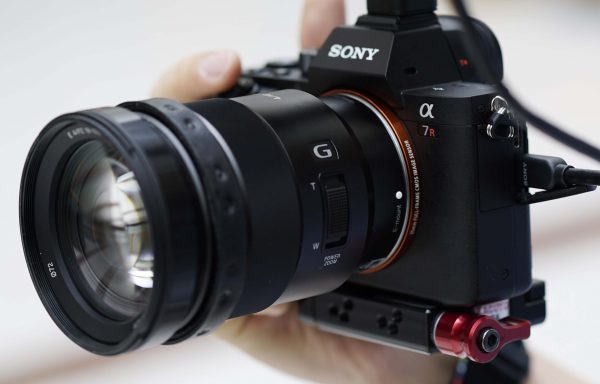
Because the 4K S35 mode is so good it opens up some lens choices that were previously unattractive on the a7S. There are several E-mount lenses designed for APS-C that work well. The additional benefit is that some of these are cheaper than their full-frame equivalents. One such lens is the 18-105mm f4 G power zoom lens which covers the basic range required for run-and-gun shooting. Like other native E-lenses it uses a fly-by-wire system in manual focus which isn’t as responsive as a proper manual lens, but at its price point there is few alternatives. The lens has had major issues in 4K mode on Sony’s FS7 and FS700: it exhibits obvious pillow distortion which is very unsightly. I was surprised when I mounted it on the a7R II and found that the imagery did not have such obvious distortions. It appears that in-camera software distortion correction is functioning in the 4K S35 mode and if this really the case then what the a7R II processor can do is pretty special. I predict that for run-and-gun shooting this lens will become the obvious choice for shooters on a budget.
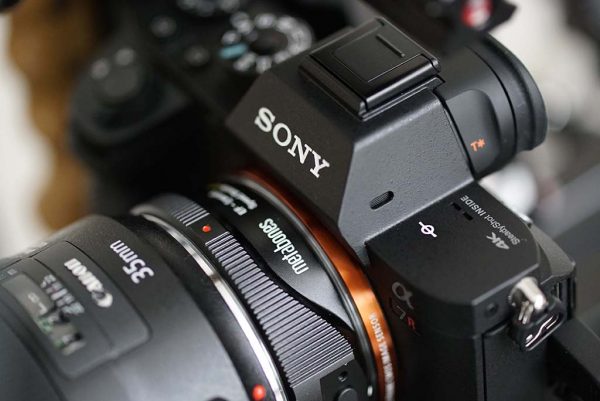
I tried a Metabones Speedbooster on the camera with the camera in S35 mode and the results were pretty impressive. Sharpness was good and this is a combination I would feel comfortable using. I also put a couple of PL Cine lenses onto the camera and it was great to have the sensor stabilisation working with them. The image from my Zeiss 15.5-45 LWZ cine zoom was particularly impressive. I can really see this camera finding uses as a crash cam or in tight space on Hollywood productions.
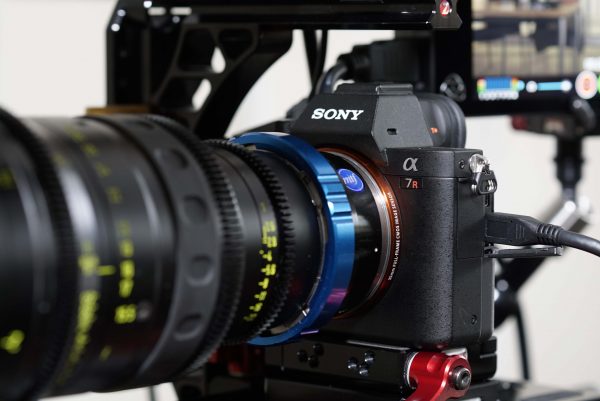
The a7R II is the most promising compact system camera for video to date and is the logical extension of the concepts first seen in the 5D MkII and other early video DSLRs. Sony have corrected many of the issues that other CSCs and DSLRs have had in the past and created a hybrid multimedia device capable of truly professional results. The image is certainly better than any other 4K S35 hybrid alternative to date and is only rivalled by its sister a7S for full-frame. It is not without its quirks but, like the a7S, I think most users will learn to live with them.





